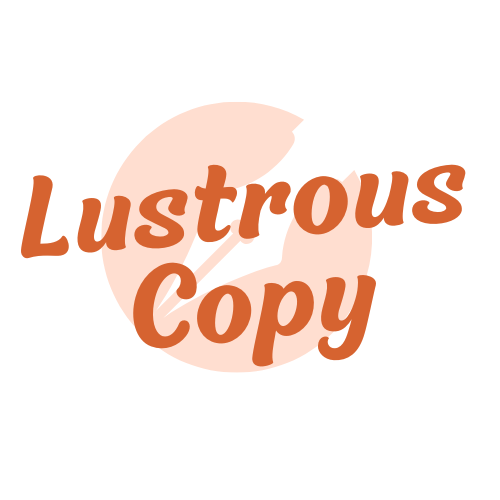This blog provides easy-to-follow tips on how to write effective homepage headlines, helping you attract more visitors to your website with engaging and compelling content.
In the digital world we live in, having a website is essential. It’s your stage, your storefront, and your storyteller.
At the forefront of this digital narrative is your homepage headline. This isn’t just a collection of words; it’s your initial greeting, your virtual handshake.
It’s what makes the crucial first impression.
When visitors land on your website, you have only a few seconds to grab their attention. In these moments, your homepage headline needs to shine brightly.
It must succinctly convey who you are, what you offer, and why it matters.
A catchy headline does more than grab attention; it holds it, piques interest, and invites further exploration.
Your headline is a beacon in the vast sea of the internet, guiding visitors to your digital doorstep.
It’s a powerful statement of your business identity and the value your customers will gain from your products or services.
Crafting the perfect headline involves a blend of clarity, creativity, and connection. It’s about striking the right balance between informative and engaging.
This blog post will guide you through creating a headline that is not just seen but felt. A headline that resonates with your audience and transforms your homepage from a mere web page into a gateway of opportunities.
Related: 6 Reasons Why Your Business Needs A Website In The Modern Marketplace
Understanding Your Audience Is the First Step to Captivating Headlines
When you start a business and build your website, the first thing you should do is really get to know your audience. This is super important, but lots of businesses miss this step. They think they should try to appeal to everyone.
But that doesn’t work!!!
Why not? Imagine trying to invite the whole world to a party. You can’t possibly know what everyone likes, right?
So, you end up with a confusing mix that doesn’t really appeal to anyone. The same goes for your business.
If you’re vague about who your audience is, you’ll end up with a vague headline. And vague headlines don’t catch anyone’s attention.
Let’s dive into the world of fashion retail to see the difference between knowing and not knowing your target audience.
- Picture a clothing store that tries to cater to everyone – from teenagers to seniors, from sporty types to business professionals. Their headline: “Fashion for All Ages, All Styles!” It sounds inclusive, but it’s too broad.
Customers get confused about what the store’s specialty is. A teenager looking for trendy streetwear and a business professional seeking formal attire both might skip this store, thinking it doesn’t cater specifically to their needs. - Now, imagine a boutique that knows its target audience is young, fashion-forward individuals. Their headline: “Chic and Trendy Styles for the Modern Youth!” This directly speaks to younger customers who are looking for the latest trends in fashion.
It’s clear and focused. When a college student looking for the latest styles sees this headline, they know they’ve come to the right place.
The difference here is clear. In the first example, the store tries to reach everyone and ends up connecting with no one in particular. Their message is too diluted to be effective.
In the second example, the boutique has a clear understanding of its audience. It uses this knowledge to craft a headline that resonates with that specific group.
Clarity is Key in Crafting Catchy Headlines
In the fast-paced digital world, clarity in your website’s headline is absolutely crucial. Why?
Because when people visit a website, they typically spend less than a minute deciding whether to stay or leave. That’s a very short window to grab their attention!
Think about it. If your headline is unclear or too vague, visitors won’t instantly understand what your site is about.
And in a world where everyone’s attention span is getting shorter, do you really think they’ll take the extra time to scroll down for more information? Probably not.
A clear, straightforward headline does the heavy lifting for you. It tells your visitors exactly what they can expect from your site right from the get-go.
No need for them to scroll down, no need for them to guess. If they’re looking for what you offer, a clear headline will make them stick around.
But if your headline is vague, you’re asking your visitors to do extra work to figure out what your business is about.
And let’s be real, NOT many will take the time to do that.
They’re more likely to bounce back to their search results and click on another site that makes its purpose clear right away.
Here are five pairs of examples demonstrating the difference between vague and clear website headlines:
- Vague: “Welcome to Your Future”
- Clear: “Revolutionize Your Career with Cutting-Edge Tech Courses”
- Vague: “Find Your Way Here”
- Clear: “Explore Our Selection of Handcrafted Hiking Boots for Adventurous Souls”
- Vague: “Bringing You the Best”
- Clear: “Organic, Farm-to-Table Meals Delivered Fresh to Your Doorstep”
- Vague: “Solutions for a Better Life”
- Clear: “Eco-Friendly Cleaning Products for a Healthier Home”
- Vague: “Join the Movement”
- Clear: “Empower Your Fitness Journey with Our Personalized Training Programs”
In each of these examples, the clear headlines offer specific information about what the business offers, directly addressing the needs and interests of their target audience.
In contrast, the vague headlines leave too much to interpretation, failing to convey the business’s core value proposition immediately.
5 Ways to Make Your Headline Irresistible
1. Paint the Positive Outcomes
When I first started out, I realized something crucial – I wasn’t just selling a product or a service; I was offering a promise of a better experience, a solution to a specific problem.
It was all about painting a picture of positive outcomes in the minds of my customers.
When someone reads your headline, you want them to instantly envision how much better, easier, or happier their life could be with what you’re offering.
For instance, instead of a straightforward “Our App Tracks Your Fitness,” I spiced it up to “Discover a Fitter You: Track, Improve, and Celebrate with Our Fitness App.”
This not only tells potential customers what the app does (tracks fitness) but also highlights the positive outcome – discovering a fitter version of themselves.
This approach makes your audience think, “Wow, this is exactly what I need to improve my life!” It’s not just about the features of your product; it’s about the end result and the joy or relief it brings.
So, when you sit down to draft that headline, ask yourself: What’s the ultimate benefit that my product or service offers? Is it peace of mind, a sense of adventure, improved well-being, time-saving convenience? Whatever it is, make sure it shines through in your headline.
2. Ask a Question About Their Pain Point
One thing I’ve learned about business is that people often aren’t just looking for specific products or services; they’re on a quest to solve their problems. This insight can be a game-changer for how you craft your headlines.
When you directly address a customer’s pain point in your headline, you instantly make your business more relevant and attractive to them.
Consider the power of a headline that asks a question about a common issue. For example, take a home organizing business. A simple yet powerful headline for them could be, “Drowning in Clutter? Discover Freedom with Our Home Organizing Solutions!”
This question doesn’t just catch the eye; it speaks directly to the heart of the viewer’s problem – the overwhelming feeling of disorganization.
This strategy is effective because it reflects empathy and understanding. When someone stumbles upon your website and sees their exact struggle being acknowledged, they’re more likely to think, “This is exactly what I need.”
3. Tell Them Exactly What Your Business Offers
Throughout this blog, I’ve emphasized one crucial point repeatedly: you MUST be clear about what your business offers.
I’m mentioning this again because it’s absolutely vital. If your visitors don’t immediately grasp what you provide, aside from the promises you make, they’re likely to leave your site.
The clarity of your offering in the headline is paramount. It’s like giving an elevator pitch through your website – quick, succinct, yet comprehensive enough to convey what you do.
I’ve seen many businesses falter by being too vague or abstract in their headlines, losing potential customers who couldn’t quickly understand what was being offered.
For example, let’s say I run a digital marketing agency. A clear and effective headline for my website would be something like, “Boost Your Online Presence with Our Expert Digital Marketing Services.” This immediately tells visitors what my business does and what they can expect from us.
I can’t stress enough how critical this clarity is. It’s not just about catching the eye; it’s about setting clear expectations.
When I craft a headline that accurately represents what my business offers, I am directly speaking to the needs and interests of my target audience.
4. Use Powerful and Promising Words
The words in your headline are more than just a string of letters; they’re the hooks that can catch the attention and imagination of your audience.
Using powerful and promising words can transform a standard headline into something compelling and memorable.
The words you choose should evoke emotion, create an image, or promise a transformation. They should be strong, vivid, and full of life.
For instance, instead of saying “We Sell High-Quality Shoes,” a more powerful headline would be “Step into Excellence with Our Premium Footwear.” Words like ‘excellence’ and ‘premium’ elevate the headline, giving it an air of quality and desirability.
In my own practice, I always look for words that convey value, benefit, or a positive change. For example, if I were marketing a yoga studio, instead of a plain headline like “Yoga Classes Available,” I might opt for something like “Transform Your Mind and Body with Our Expert-Led Yoga Retreats.” The words ‘transform,’ ‘expert-led,’ and ‘retreats’ not only describe the service but also promise a beneficial and enriching experience.
Remember, the goal is to make your headline as impactful and appealing as possible. Every word should work towards creating a positive and intriguing image of your offering.
3. Use the Power of Sub-Headline
If you’re worried about your headline getting too long, here’s a tip: use sub-headlines. They’re a fantastic way to add more info without cluttering your main headline. Think of your headline as the big, bold announcement and your sub-headline as the helpful friend that explains a bit more.
This combo works REALLY great. It keeps things clear and engaging without overwhelming your visitors with too much information at once. So, remember to pair a strong headline with a supportive sub-headline to effectively communicate your message.
Testing and Tweaking for a Fine-Tuned Headline
Through my experiences in marketing and content creation, I’ve learned that crafting the perfect headline is rarely a one-shot deal. It’s a process of testing, tweaking, and refining.
The initial headline you come up with might be good, but there’s always room for improvement. The key is to test different versions and see which one resonates the most with your audience.
Testing is not just about changing words; it’s about understanding your audience’s psychology. What drives them? What are their aspirations? Sometimes, conducting A/B tests where you present two different versions of a headline to see which performs better can provide valuable insights.
These tests can be done through email campaigns, social media, or even direct website traffic analysis.
Real-World Examples of Successful Homepage Headlines
Netflix

Netflix nails their homepage headline by following the essentials of good web communication. They grab attention with a clear and succinct headline: “Unlimited movies, TV shows, and more.” This immediately tells visitors what Netflix offers, tapping into the crucial few seconds users spend deciding to stay or go.
The headline is laser-focused, sidestepping the common mistake of being too broad. It’s specific enough to be meaningful to their target audience without being vague, which aligns perfectly with the principle that a business must know and speak directly to its audience.
Clarity shines through as well, with the headline leaving no room for confusion, a must in our fast-paced, low-attention-span digital world.
Moreover, Netflix uses the power of impactful words like “Unlimited,” conveying a sense of abundance and freedom, and supports the main message with a sub-headline that promises ease and flexibility: “Watch anywhere. Cancel anytime.”
Crazy Egg

Crazy Egg effectively employs a concise and goal-oriented headline on their homepage: “Reach your website goals faster.”
This headline is a good example of clear, direct communication that resonates with site owners and marketers – the core of their target audience.
The headline promises a clear benefit – achieving website goals quickly, which taps into the universal desire for efficiency and progress.
It’s an example of how understanding your audience’s objectives can lead to a compelling and focused headline.
They follow up with a sub-header that further defines their target audience, adding credibility by mentioning the diverse range of customers who trust their service and the longevity of their experience since 2005. This not only provides social proof but also cements their reputation in the field.
SEMRush

SEMrush’s homepage headline “Get measurable results from online marketing” directly promises value, resonating with professionals who prioritize results and efficiency.
I particularly appreciate how they list their offerings — SEO, content marketing, competitor research, PPC, and social media marketing — right in the sub-headline.
This clarity in their sub-headline lays out their services upfront, making it easy for visitors to see the breadth of tools available, which I find very effective.
MailChimp

MailChimp’s headline, “Turn your emails into revenue,” immediately conveys a powerful benefit, suggesting a transformation of a simple task into a profitable one.
The sub-headline reinforces this by stating their expertise in email automation and marketing, assuring me that they have the tools and knowledge to boost my email engagement and sales. It’s a reassuring and direct message that speaks of growth and success.
Nike

Nike’s headline directly aligns with the common practice of setting new fitness goals for the new year. It’s an engaging call to action for consumers to equip themselves with the right gear to tackle their resolutions.
The sub-headline clearly details the benefits of the featured products. It communicates that Nike offers a selection specifically chosen to support fitness endeavors, from footwear to clothing, underscoring their commitment to being a partner in their customers’ active lifestyles.
This approach not only promotes their products but also positions Nike as an enabler of athletic aspirations.
5 Common Pitfalls to Avoid in Headline Writing
1. Being Too Vague
One of the most common mistakes I’ve observed in headline writing is when you come across a headline that’s too vague, it often leaves you uncertain about what the content is really about. It’s a pitfall that can lead to a loss of your interest and engagement.
As a reader, I appreciate headlines that are clear, specific, and to the point because they make it easy for me to understand the content’s relevance and decide whether I want to explore further
2. Ignoring the Target Audience
Ignoring the target audience means not paying enough attention to the people you want to reach with your message. This can be a problem because when you don’t understand your audience well, your message might not connect with them.
This can lead to fewer people being interested in what you have to say and missed opportunities for your business.
To avoid this mistake, it’s important to learn as much as you can about your audience and make sure your headlines and messages are relevant to them.
3. Using Jargon or Complex Language
Some businesses mistakenly believe that using complex words and industry jargon makes them appear more professional and knowledgeable. However, the reality is quite the opposite.
When businesses use overly technical language or jargon in their headlines, they risk alienating their audience. Most people prefer clear and straightforward communication.
They want to understand a headline without having to decipher unfamiliar terms or acronyms.
Complex language can create confusion and disconnect, leading readers to lose interest and move on.
In my experience, simplicity is often more effective. I’ve found that headlines that use plain language and avoid unnecessary jargon tend to perform better. They are more inclusive and resonate with a broader audience.
4. Being Too Long
According to PRSA, the ideal headline contains around 8 words or fewer. Lengthy headlines can overwhelm readers and make it difficult to quickly grasp the main message.
In today’s fast-paced digital world, people often skim content, and verbose headlines may cause them to lose interest.
If additional context is required, it can be provided through subheadlines or within the content itself. This approach strikes a balance between delivering a concise headline and offering readers the necessary information.
5. Lack of Keywords
Lack of keywords in headlines is a common mistake. Keywords are essential for SEO and discoverability. When headlines lack keywords, it hinders search engine visibility and makes it harder for the right audience to find your content.
To avoid this, conduct keyword research and incorporate relevant keywords naturally into your headlines for better discoverability.
Turning Your Headline into a Gateway for Growth
Let’s remember how important a great headline is. We’ve looked at some awesome headline examples that show how the right words can really grab someone’s attention.
So, here are some easy tips to write a headline that’s eye-catching: Keep it clear, make it interesting, and speak directly to your visitors.
Think about these examples when you’re writing. They’ll help you create headlines that are not just catchy but also clear and on-point with your brand’s message.




